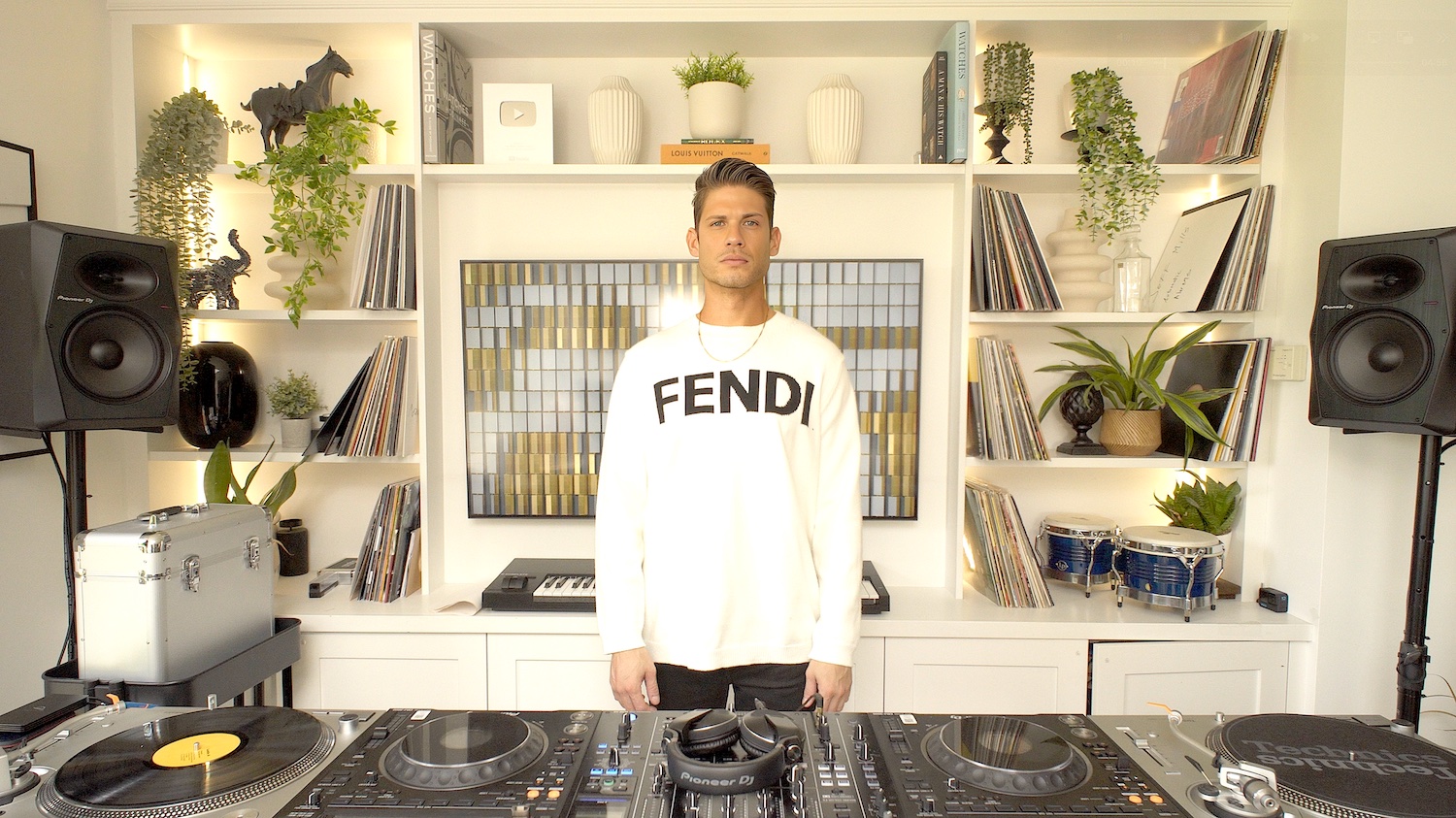Alejandro Zamora has lived a few lives already. He grew up in Caracas, cut his teeth on vinyl in London’s techno scene, then walked away from music altogether when business and personal struggles took over. What eventually brought him back wasn’t a club or a crowd, but a pair of turntables in his living room.
Mixing records became a way of coping with depression, and what started as a private ritual slowly evolved into The White Collar Project – a YouTube channel that now reaches over 160,000 subscribers and a creative platform spanning music, art, and design. At its core, though, it’s still about one thing: finding connection through music.
We spoke to Alejandro to get the lowdown on this deeply personal project.
When you first got back on the decks after years away, was it muscle memory or did it feel like learning everything again from scratch?
Honestly, it was a bit of both. I remembered where everything was and what to do; it was almost automatic. But my ears took a little longer to catch up. Those first few sessions were rough. Over time, though, my body and my mind found a rhythm together. The most important change was mental. I stopped trying to chase what I sounded like in the past and just let myself sound like someone who’s coming back with fresh ears. That’s when it started to click again.
Your channel seems to have blown up without any big marketing push. Do you see that as luck, timing, or just people craving something more human from DJ culture?
There’s always some luck and timing involved, for sure. But I think people are just hungry for something that feels genuine. I keep things simple: vinyl first, long sets, clean sound. I don’t chase trends or try to be flashy. I just play music that I love and let the camera capture it. Little things make a difference too like giving sets titles that actually describe the mood, sticking to a regular schedule, and always respecting the audience.
Playing strictly vinyl in 2025 feels almost rebellious. What keeps you committed to that format when the rest of the world is pushing convenience and tech?
Vinyl keeps me honest. It demands care, and it rewards attention. You can’t just scroll and drop a track in. You really have to know your records and listen with your whole body. The limitations actually create a different kind of energy. When two records lock in by feel, that rush is like nothing a screen can give you. I’m not anti-tech; I use digital when it really serves the story. But I stick with vinyl because it’s my preference and it connects me to the music on a deeper level. Every record carries its own history.
What is the one White Collar Project set that feels closest to who you are, and why?
There’s a home session where I let the first track breathe, then ease from deep house into some Detroit techno, and finally flip the mood with Latin percussion. Nothing flashy. Just patience, swing, and records that I love and really mean something to me. It feels the most like me because I’m not trying to impress anyone. It’s honest about where I’m at, and it leaves room for the listener to breathe, too. That’s the space I want to create.
How did mixing records change the way you experienced your own inner noise?
Depression made everything feel flat and distant for me. Mixing brought me back into the present moment. Beatmatching forces you to focus. That kind of attention creates a calm where the noise in my head loses some of its grip. It’s not a cure, but it’s a practice that steadies me. Kind of like a form of meditation. Finishing a set and sharing it gives me momentum, especially on days when I don’t have much. It’s a reminder that I can still make something that helps me and maybe helps someone else too.
You have built this project across music, fashion, and art. Do you see them all as different languages telling the same story?
Definitely. For me, music, fashion, and art are just different ways of expressing the same ideas. Music lets me set a mood and build an atmosphere. Fashion is about showing personality and attitude; how you carry yourself, what you choose to wear. Visual art shapes how people see and feel a space. All of them come down to storytelling, just with different tools. With The White Collar Project, I try to make sure those elements work together so everything feels connected and intentional.
 Has reconnecting with music changed how you listen in everyday life, outside of DJing?
Has reconnecting with music changed how you listen in everyday life, outside of DJing?
Completely. Since reconnecting with music, I’m more present and intentional when I listen, both to songs and to the world around me. I take my time with albums and let tracks reveal themselves instead of rushing. And I value quiet more than ever. Rest is part of the music, too. Sometimes the best part of a track is the space between the notes.
If The White Collar Project disappeared tomorrow, what is the one lesson or feeling you would want people to carry with them?
Begin again. You can step away, and you can come back. You don’t have to be perfect—you just have to care. Be human, be honest, and keep moving forward. If the project leaves anything behind, I hope it’s permission to start wherever you are and make something real that connects.



